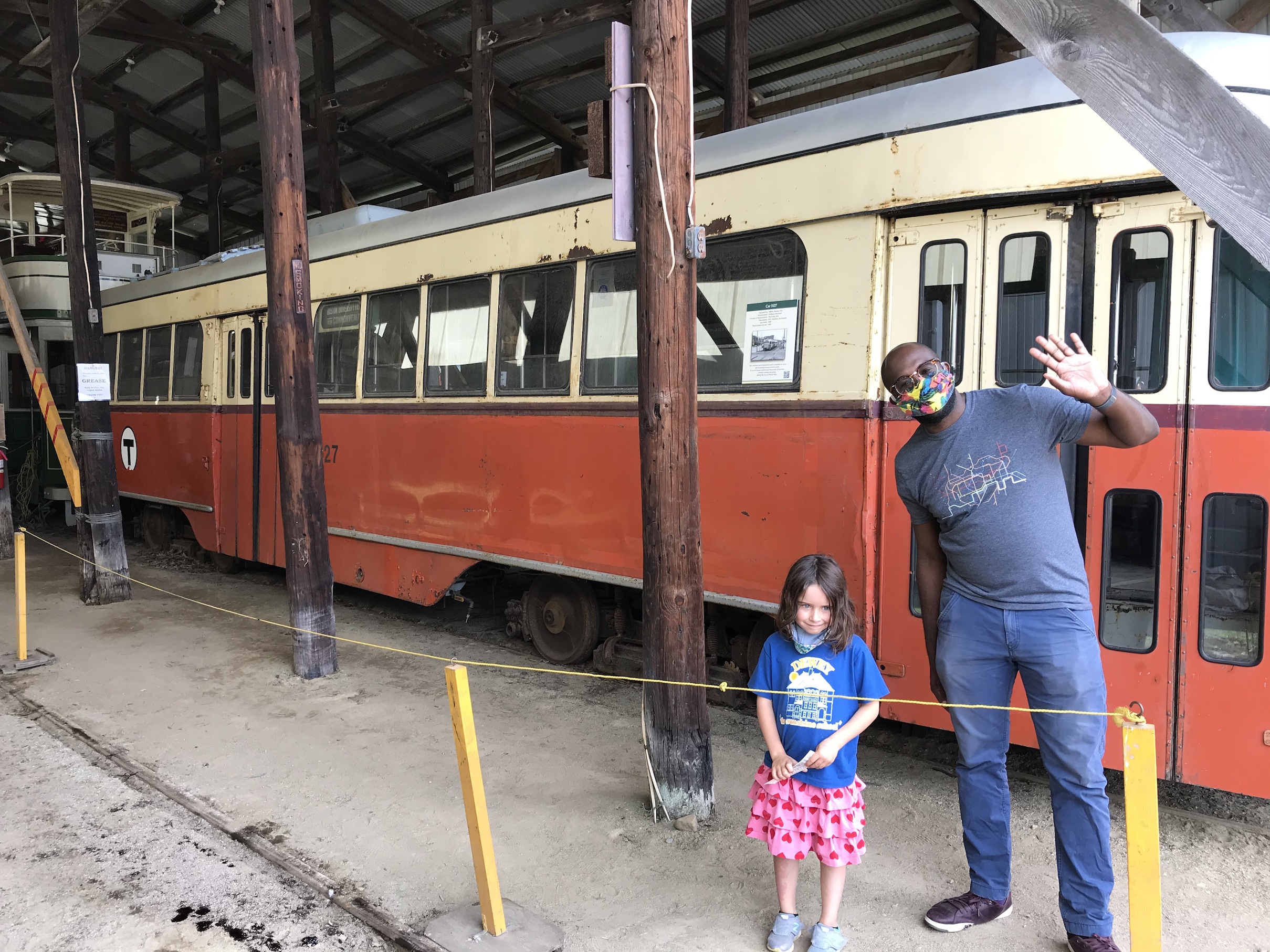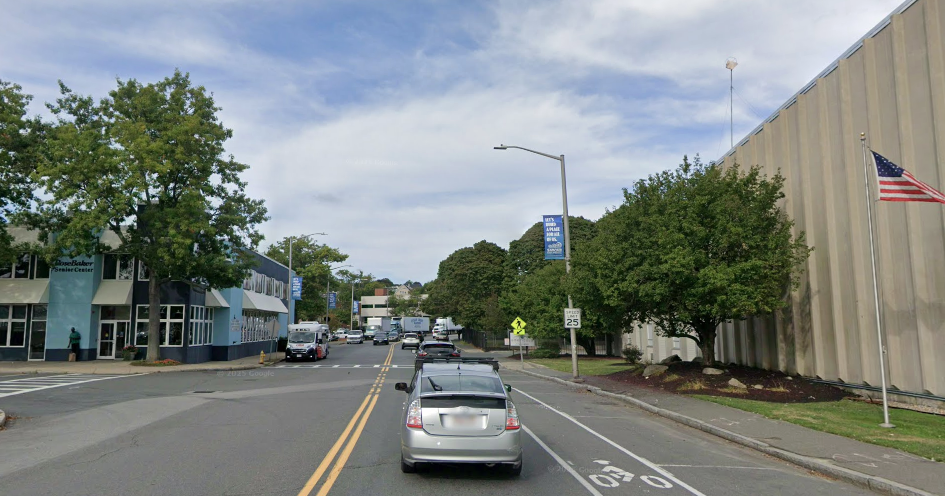It's an unusual final destination for any mass transit line, but for more than 80 years, decommissioned streetcars, buses, and trains from all over the world have retired to the Seashore Trolley Museum on the rural fringes of Kennebunkport, Maine.
There, a small army of volunteer transit enthusiasts – including many current and retired employees of the MBTA – spend their free time restoring and repairing the world's largest museum collection of mass transit vehicles.
And when the museum is open to visitors, volunteer conductors offer rides on historic streetcars along the museum's electrified 1.5-mile demonstration line, a segment of Maine's defunct Atlantic Shore Line Railway.
In the summer of 2020, the author brought TransitMatters Executive Director Jarred Johnson and his then-five year-old daughter for a visit to the Seashore Trolley Museum, where we rode this 1924 Boston Elevated Railway Co. streetcar:
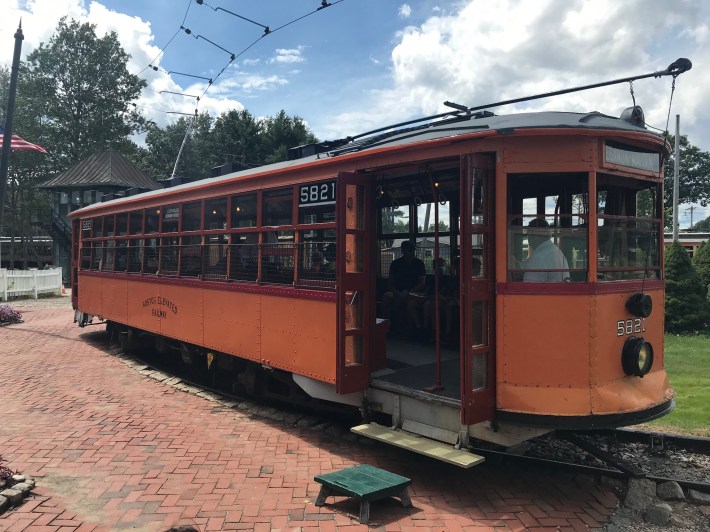
Note the roll sign on the train above: "Lebanon-Malden," a route that's still served to this day by the MBTA's 106 bus.
Several large carbarns house dozens of restored streetcars, including this 1897 Boston streetcar, whose roll sign suggests that it once ran on parts of the modern-day Green Line:
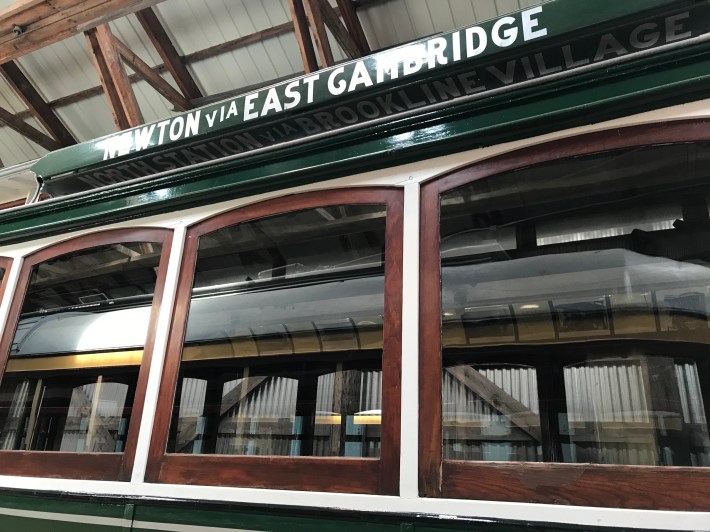
The museum's collection includes transit vehicles from all over the world, but most of its artifacts are from New England – including a lot of donated equipment from the MBTA.
In a phone conversation with Streetsblog earlier this week, Katie Orlando, the museum's executive director, said that the museum has enjoyed "a great partnership over the years" with the T and its employees.
"It's not a formal arrangement, but when something's about to be taken offline, because we have so many contacts at the T, we can make arrangements to acquire vehicles and equipment when they're about to be taken out of service," says Orlando.
In fact, one of the first things visitors see on arrival is the huge copper-clad headhouse from the former Northampton station on the Orange Line, which was abandoned with the rest of the Washington Street elevated railway in 1987:
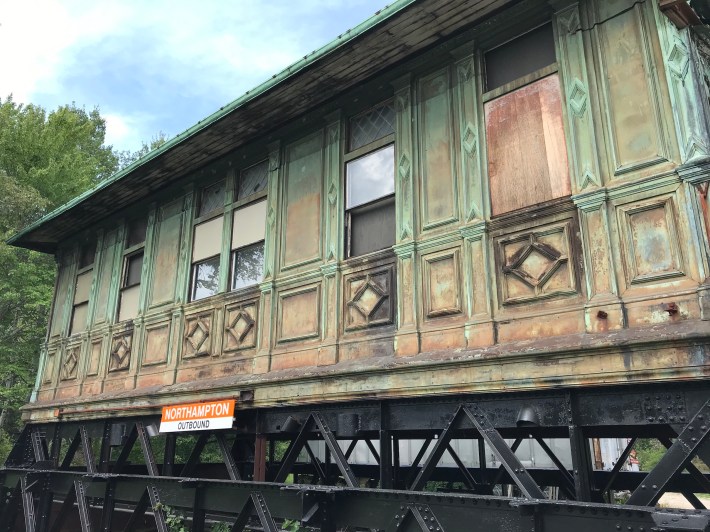
While many of the Museum's vehicles have been impeccably restored, many others are still awaiting restoration.
"A lot of the pieces, back in the day, were painted with lead paint or have asbestos flooring," says Orlando.
Many of the museum's newer acquisitions bear the scars of deferred maintenance that continue to affect transit systems to this day:
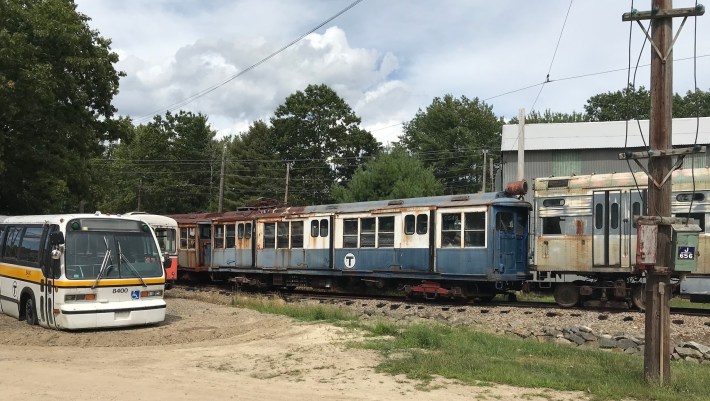
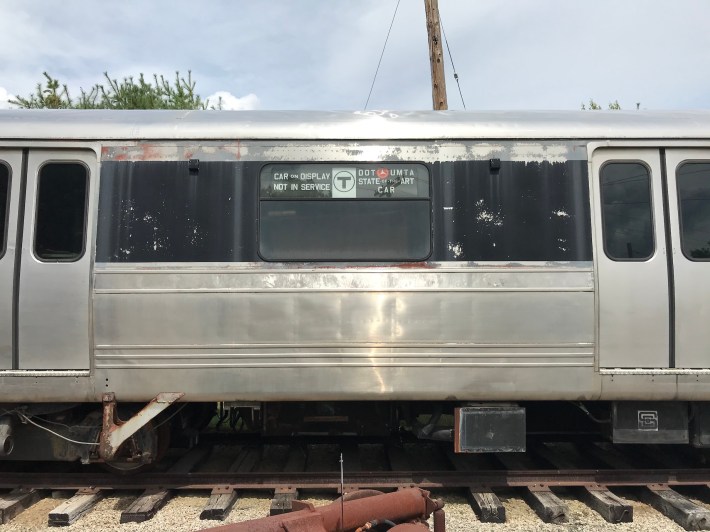
Ironically for a museum of transit equipment, the Seashore Trolley Museum is nearly impossible to reach without a car. The best option is to take the Amtrak Downeaster to the Wells or Biddeford/Saco stations, then call a taxi. Alternatively, the museum is a one-hour bike ride away from the Saco Amtrak Station via the Eastern Trail.
Orlando says that the organization is doing some fundraising to restore its buses to working condition, and hopes that it can eventually fill in the local gap in transit services with vehicles from the museum's collection.
"We do have plans to get some of our buses in our collection up and road-worthy again, and use them to make connections to the Amtrak Downeaster in Wells or Saco," Orlando told Streetsblog.
The Seashore Trolley Museum is open through the end of October, Wednesdays through Sundays. It will reopen again in December for holiday-themed rides.
Potential volunteers can register on the organization's website, or email volunteer@trolleymuseum.org.
